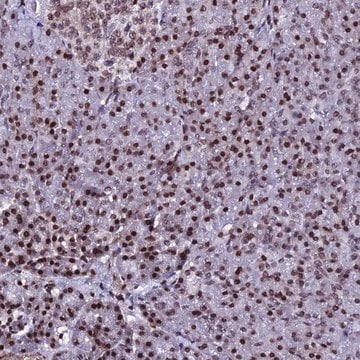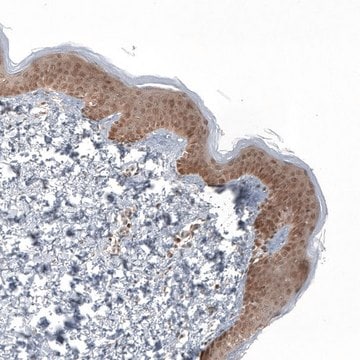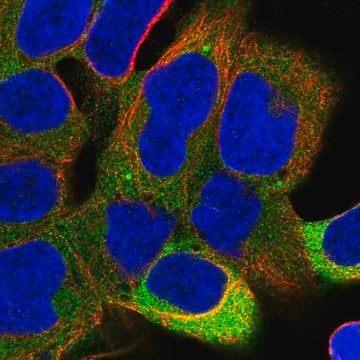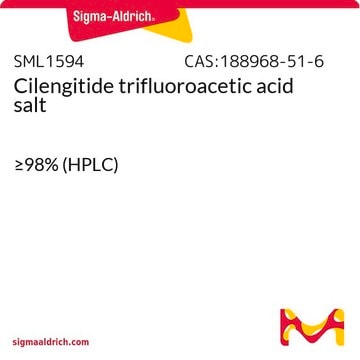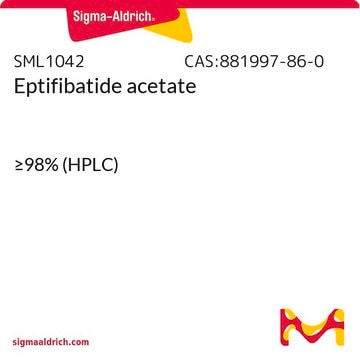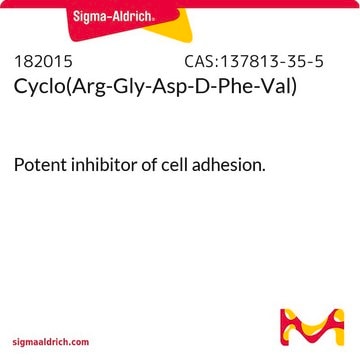A9041
Arg-Gly-Asp-Ser
≥95% (HPLC)
About This Item
Productos recomendados
biological source
synthetic
Quality Level
assay
≥95% (HPLC)
form
powder
composition
Peptide content, ~70%
technique(s)
cell culture | mammalian: suitable
storage temp.
−20°C
SMILES string
N[C@@H](CCCNC(N)=N)C(=O)NCC(=O)N[C@@H](CC(O)=O)C(=O)N[C@@H](CO)C(O)=O
InChI
1S/C15H27N7O8/c16-7(2-1-3-19-15(17)18)12(27)20-5-10(24)21-8(4-11(25)26)13(28)22-9(6-23)14(29)30/h7-9,23H,1-6,16H2,(H,20,27)(H,21,24)(H,22,28)(H,25,26)(H,29,30)(H4,17,18,19)/t7-,8-,9-/m0/s1
InChI key
NNRFRJQMBSBXGO-CIUDSAMLSA-N
Gene Information
human ... ITGA2B(3674) , ITGB3(3690)
mouse ... Itgb3(16416)
¿Está buscando productos similares? Visita Guía de comparación de productos
Amino Acid Sequence
General description
RGDS has been shown to block fibrinogen-induced aggregation of intact erythrocytes and specific binding of fibrinogen to erythrocyte membranes. The effect of RGDS on transforming growth factor ß1 (TGFß1) mRNA expression and secretion in cultured human mesangial cells has been investigated. RGDS has been utilized in a study of integrin-mediated signal transduction in cultured cells from the sponge Suberites domuncula. RGDS has been demonstrated
to mitigate the binding of Mycobacterium tuberculosis to murine alveolar macrophages
Application
- to study its effects on cell attachment in rats
- to analyse the interaction of fibrinogen with erythrocytes occurs through integrin related receptor
- to pretreat the cells, to assess the role of integrin in the cell attachment process
- to test its competition with platelet-secreted, nanosheet-adsorbed proteins for binding to glycoprotein IIIa (GPIIIa)
Packaging
Preparation Note
clear, colorless solution.
Other Notes
Storage Class
11 - Combustible Solids
wgk_germany
WGK 3
flash_point_f
Not applicable
flash_point_c
Not applicable
ppe
Eyeshields, Gloves, type N95 (US)
Certificados de análisis (COA)
Busque Certificados de análisis (COA) introduciendo el número de lote del producto. Los números de lote se encuentran en la etiqueta del producto después de las palabras «Lot» o «Batch»
¿Ya tiene este producto?
Encuentre la documentación para los productos que ha comprado recientemente en la Biblioteca de documentos.
Los clientes también vieron
Artículos
Tissue engineering has become a key therapeutic tool in the treatment of damaged or diseased organs and tissues, such as blood vessels and urinary bladders.
Nuestro equipo de científicos tiene experiencia en todas las áreas de investigación: Ciencias de la vida, Ciencia de los materiales, Síntesis química, Cromatografía, Analítica y muchas otras.
Póngase en contacto con el Servicio técnico


